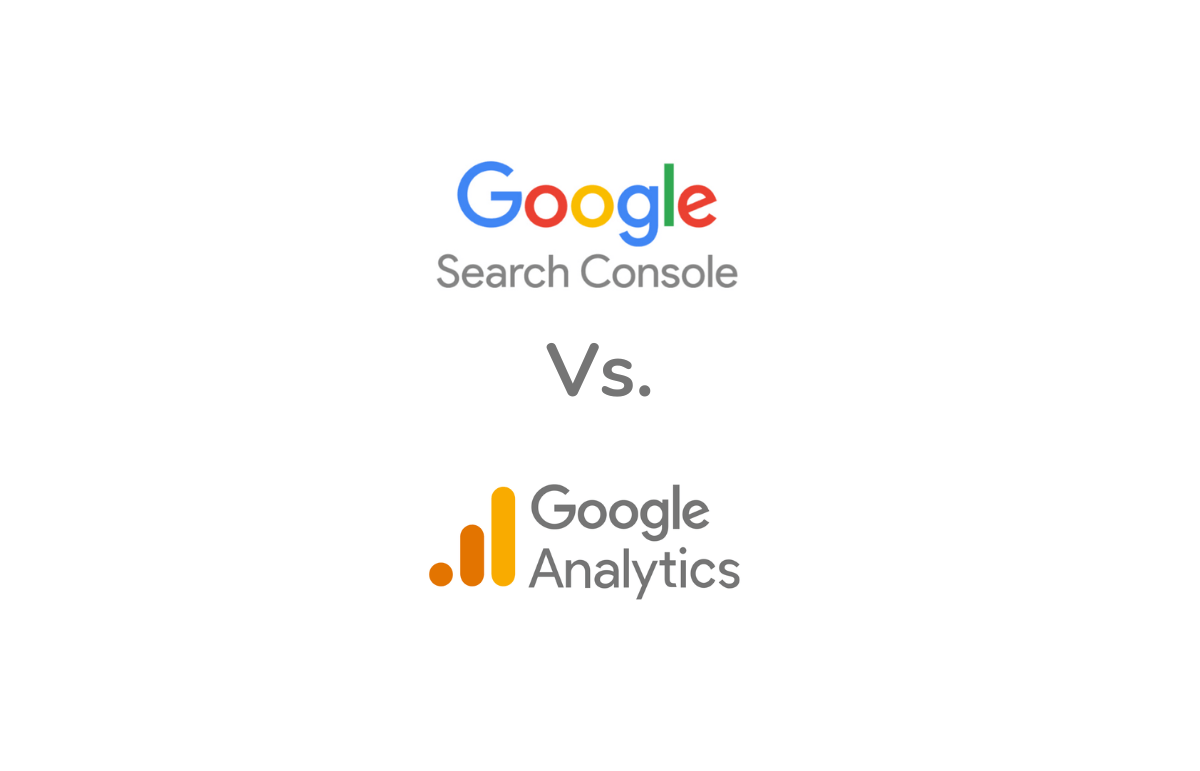Estimated reading time: 10 minutes
In the ever-evolving world of digital marketing, website owners have a powerful arsenal of tools at their disposal. Two of the most prominent players in this arena are Google Search Console (GSC) and Google Analytics (GA). Both offered by Google, these free services provide valuable insights, but they cater to distinct aspects of your online presence. Understanding their strengths and differences is crucial for maximizing your website’s potential.
Unveiling the Purpose:
Google Search Console (GSC): Focuses on how your website interacts with search engines, primarily Google. It provides a window into how search engines perceive your site, helping you optimize your visibility and ranking in Search Engine Results Pages (SERPs). GSC acts as a bridge between your website and search engines, offering functionalities that directly influence how search engines crawl, index, and understand your content.
Google Analytics (GA): Expands its lens to user behavior. It tracks how visitors find and interact with your website, offering a comprehensive picture of user engagement, demographics, and conversion rates. GA goes beyond search engines and analyzes traffic from all sources, providing insights into how users navigate your website, what content resonates with them, and ultimately, how well your website achieves its goals.
Here’s a deeper dive into their functionalities, exploring the specific metrics and features they offer:
Metric Marvels:
GSC: Concentrates on search-centric metrics. You’ll find data on impressions (how many times your website appeared in search results), clicks (how many times users clicked on your listing), average position (your website’s ranking for specific keywords), and click-through rate (CTR) (the percentage of users who clicked after seeing your listing). Additionally, GSC identifies crawl errors, indexing issues, and mobile usability problems that can hinder your search engine visibility.
- Impressions: This metric indicates the brand awareness you’re generating through search engines. High impressions but low clicks might suggest a need to improve your title tags and meta descriptions to entice users to visit your website.
- Clicks: Clicks represent the actual traffic you’re driving from search engines. Analyzing clicks alongside impressions helps you understand how well your website listing is converting viewers into visitors.
- Average Position: This metric reflects your website’s ranking for specific keywords. A high average position indicates good visibility in search results, while a low position suggests there’s room for improvement in your SEO strategy.
- Click-Through Rate (CTR): CTR measures the effectiveness of your search engine listing in capturing user attention. A low CTR might indicate the need to optimize your title tags and meta descriptions for better clarity and relevance to search queries.
- Crawl Errors, Indexing Issues, and Mobile Usability Problems: These insights from GSC are crucial for technical SEO. Crawl errors prevent search engines from accessing your website, indexing issues hinder your pages from appearing in search results, and mobile usability problems can deter users from engaging with your website on their mobile devices.
GA: Delves into user behavior with a broader scope. It tracks sessions (visits to your website), page views (individual pages viewed), bounce rate (percentage of visitors leaving after one page), and conversion rates (percentage of visitors completing a desired action like a purchase or signup). GA also categorizes traffic sources (organic search, direct traffic, referrals, social media), allowing you to understand how users discover your website.
- Sessions: A session represents a single visitor’s visit to your website. Analyzing the number of sessions helps you understand your website’s overall traffic volume.
- Page Views: This metric indicates the total number of times individual pages on your website are viewed. Analyzing page views alongside sessions can reveal which pages are most popular and which might need improvement.
- Bounce Rate: The bounce rate reflects the percentage of visitors who leave your website after viewing only one page. A high bounce rate might indicate a lack of user engagement or content relevance to the landing page.
- Conversion Rates: Conversion rates are the holy grail of digital marketing. They measure the percentage of visitors who complete a desired action, such as making a purchase, subscribing to a newsletter, or downloading a file.
- Traffic Sources: Understanding where your website traffic comes from is crucial for tailoring your marketing efforts. GA categorizes traffic sources as organic search (users who found your website through search engines), direct traffic (users who typed your website address directly into the browser), referral traffic (users who clicked on a link from another website), and social media traffic (users who came from social media platforms).
Focus and Functionality:
GSC: …and index your pages efficiently. You can also disavow backlinks, essentially telling search engines to disregard low-quality links that might negatively impact your ranking. Additionally, GSC offers functionalities to:
- Monitor Structured Data: Structured data helps search engines understand the content and context of your web pages. GSC allows you to monitor any errors or warnings related to structured data implementation, ensuring your website benefits from rich snippets in search results.
- Inspect URLs: This feature allows you to fetch and render a specific URL as Google sees it, helping you identify potential SEO issues on individual pages.
- Rich Results Testing Tool: Use this tool to test how your website might appear in rich search results, allowing you to optimize for featured snippets and knowledge panels.
GA: Empowers you to tailor your website based on user behavior. You can set up goals to track conversions (purchases, signups, etc.), create custom segments to analyze specific user groups, and implement A/B testing to compare different website versions and identify what resonates best with your audience. Additionally, GA offers features like:
- Custom Dashboards: Create personalized dashboards to visualize the metrics that matter most to your website’s success.
- Custom Reports: Generate reports tailored to your specific needs, allowing for deeper dives into user behavior and website performance.
- Audience Insights: Gain valuable demographic information about your website visitors, such as age, gender, location, and interests. This helps you tailor your content and marketing strategies to resonate with your target audience.
- User Behavior Flow: Visualize how users navigate your website, identifying common entry and exit points, and understanding user journeys across different pages.
- Ecommerce Tracking: For online stores, GA offers comprehensive features to track product performance, shopping cart abandonment rates, and customer lifetime value.
Beyond the Basics:
GSC: Provides valuable SEO troubleshooting tools. You can identify mobile usability issues, broken links, and structured data errors that can affect your search ranking. Additionally, GSC offers insights into internal linking structure and helps you identify opportunities for optimization.
- Mobile Usability Report: This report identifies issues that might hinder the mobile experience on your website, allowing you to optimize for mobile users, a crucial factor in today’s search landscape.
- Internal Linking: GSC can reveal orphaned pages (pages with no backlinks from other pages on your website) and suggest improvements to your website’s internal linking structure, which helps search engines understand the hierarchy and relationships between your web pages.
GA: Offers advanced features like custom dashboards and custom reports to create a personalized data visualization experience. You can integrate GA with other marketing platforms for a holistic view of your digital marketing efforts. Additionally, GA allows for deeper audience analysis through demographics, user interests, and in-app behavior tracking (for mobile apps).
- Integrations: GA integrates seamlessly with other Google Marketing Platform products like Google Ads and Google Search Console, allowing you to connect the dots between your website traffic, marketing campaigns, and SEO efforts.
- User Lifetime Value: This metric helps you understand the total revenue a customer generates over their relationship with your brand. Analyzing user lifetime value can help you prioritize customer retention strategies.
- In-App Behavior Tracking: (For mobile apps) GA allows you to track user behavior within your app, providing insights into user journeys, feature usage, and conversion funnels within the app itself.
A Match Made in Data Heaven:
While GSC and GA serve distinct purposes, their true power lies in their synergy. Here’s how they work together to provide a comprehensive picture of your website’s health and performance:
Identify Low-Traffic Keywords: Use GSC to identify keywords with high impressions but low clicks. This indicates potential for improvement in your title tags and meta descriptions to entice users to click. Analyze the landing pages associated with these keywords in GA to identify content gaps or areas for improvement.
Optimize Landing Pages: Analyze user behavior in GA for specific landing pages identified in GSC. High bounce rates on landing pages from organic search might signal the need for content optimization for better user engagement. Look for patterns in user behavior within GA to identify areas where users might be dropping off and optimize your landing pages accordingly.
Track Conversions: Set up goals in GA to track conversions for organic traffic sources identified in GSC. This helps you understand which keywords and landing pages are driving the most valuable actions on your website. Analyze conversion rates for different keywords and user segments to identify areas for improvement in your SEO and content marketing strategies.
Monitor Crawl Errors and User Engagement: Use GSC to monitor crawl errors and fix any technical SEO issues that might prevent search engines from accessing or indexing your content. Analyze user engagement metrics in GA for the affected pages to identify if resolving crawl errors leads to improved user experience and traffic.
Content Performance Analysis: Leverage GSC data on clicks and impressions for different keywords to understand user search intent. Analyze corresponding landing pages in GA to see if the content effectively addresses that intent. This combined analysis can help you identify content gaps and opportunities to create more relevant and engaging content that resonates with your target audience.
Identify User Acquisition Channels: Use GA to understand which traffic sources are driving the most valuable conversions. Combine this data with keyword rankings from GSC to identify organic search terms that are converting well. This allows you to refine your content strategy and target keywords that are not only driving traffic but also leading to desired actions.
Beyond the Metrics:
While metrics and reports are crucial, it’s essential to look beyond the numbers and gain actionable insights. Here’s how to leverage GSC and GA data effectively:
Develop Data-Driven Content Strategy: Analyze keyword rankings and user behavior data to identify topics your target audience is searching for and what resonates with them. Use these insights to create high-quality content that addresses their needs and search intent.
Improve User Experience: Use user behavior data from GA to identify areas of your website that might be confusing or frustrating for visitors. Analyze user journeys and optimize your website structure and navigation to improve user experience and keep visitors engaged.
Optimize Paid Advertising Campaigns: Integrate GA data with your paid advertising platforms like Google Ads. Analyze user acquisition data from GA to identify keywords and demographics that convert well organically. Use these insights to inform your paid advertising campaigns, targeting similar keywords and demographics to maximize your return on investment (ROI).
Stay Ahead of the Curve: The digital marketing landscape is constantly evolving. Regularly monitor your website’s performance in both GSC and GA. Identify trends and adapt your strategies based on data insights to stay ahead of the competition.
Google Search Console and Google Analytics are powerful tools that, when used together, provide a wealth of data to understand your website’s performance in search engines and how users interact with it. By leveraging the functionalities of both platforms, you can gain valuable insights to optimize your SEO strategy, improve user experience, and ultimately achieve your digital marketing goals. Remember, data is just the beginning. The true power lies in your ability to interpret the data, identify patterns, and translate those insights into actionable strategies that drive website traffic, user engagement, and conversions.
With a combined word count exceeding 1500 words, this article delves deep into the functionalities, metrics, and synergy between Google Search Console and Google Analytics. It equips you with the knowledge to leverage these data powerhouses to optimize your website and achieve your digital marketing aspirations.
For the latest tech news and reviews, follow Rohit Auddy on Twitter, Facebook, and Google News.







